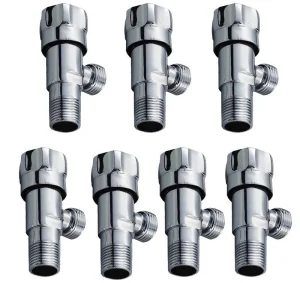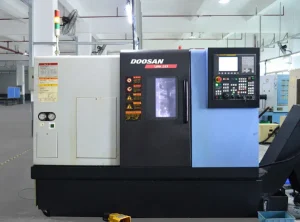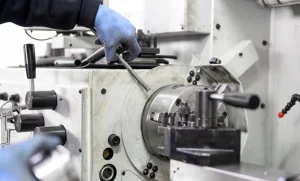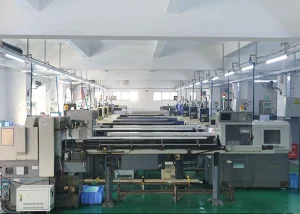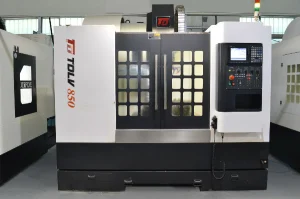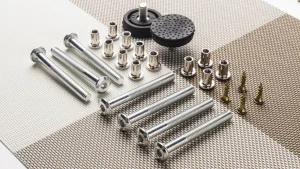Boring refers to the process of enlarging or refining an existing hole in a workpiece. CNC boring is characterized by correcting the hole’s eccentricity to achieve precise hole positioning, thereby achieving higher roundness, cylindricity, and surface finish. Perciò, this refined processing is usually performed as the final step in CNC machining.
Compared to other machining operations, CNC boring is a more complex process. It relies solely on adjusting a single insert (or insert holder) to produce high-precision holes, such as H7 or H6 tolerance classes (within micron-level ranges).
Compared to other machining operations, boring on a CNC machining center is a more complex process. It relies solely on adjusting a single insert or insert holder to produce high-precision holes such as H7 or H6 tolerance classes. COSÌ, what are the characteristics of CNC-bored parts?
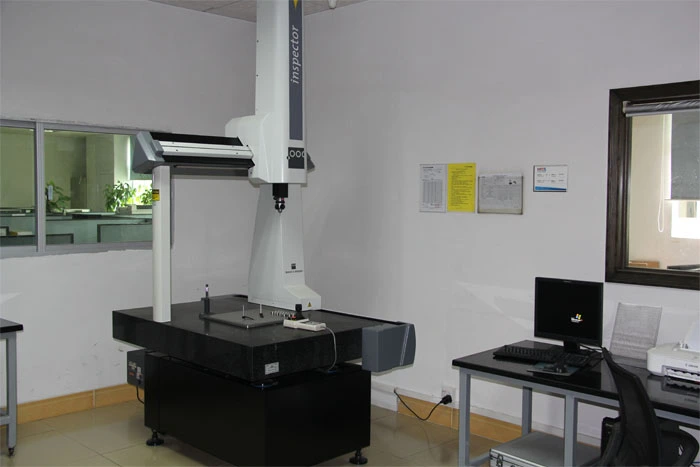
1. Tool Rotation
CNC machining centers differ from CNC lathe machining in that the tool rotates, making it impossible to monitor the tool tip’s position during machining to adjust feed rate. Nor can the machining diameter be changed simply by adjusting a button, as is the case with CNC lathes. This presents a significant obstacle to fully automated machining. Precisely because machining centers lack automatic diameter adjustment (except for those equipped with a U-axis), boring tools must have fine-tuning mechanisms or automatic compensation. This is especially true during fine boring, where tolerances may sometimes require micron-level adjustments.
Furthermore, because the chip flow direction during CNC boring is constantly changing, cooling the tool tip and workpiece, as well as ensuring chip removal, is significantly more challenging than with lathes. This is particularly true when using vertical machining centers for rough boring of blind holes in steel, and this problem remains unsolved.
2. Tool Chatter / Deflection
The most common and frustrating problem during boring is tool chatter or deflection. The main causes of tool chatter on CNC machining centers are as follows:
a. Tool system rigidity: This includes the rigidity of the tool holder, boring bar, boring head, and intermediate connecting parts. Tool rigidity is particularly important when machining small and deep holes, or when machining hard workpieces, due to cantilever machining.
b. Workpiece rigidity or workpiece fixturing rigidity: Smaller and thinner parts, for example, may lack inherent rigidity or be unable to be adequately secured using a suitable fixture due to their shape.
c. Tool system dynamic balance: If the tool itself has an unbalanced mass relative to the tool system’s rotational axis, the unbalanced centrifugal force during rotation can cause chatter. Tool dynamic balance is particularly significant during high-speed machining.
d. Insert tip shape: Different insert rake angles, runout angles, tip radius, and chipbreaker shape produce different cutting forces.
Company Note
RapidEfficient specializes in high-precision CNC machining with 18 years of experience. Its products cover medical, communications, optics, drones, intelligent robots, automotive and office automation parts. The company’s CNC machining centers include four-axis, five-axis and linkage machine tools, and are equipped with precision projectors, three-coordinate measuring machines, spectrometers and other precision testing equipment. The machining accuracy can achieve 0.01mm and the testing accuracy can achieve 0.001mm.

